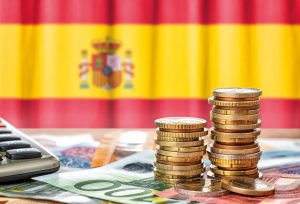Spain NAB: ‘Impact-Washing…? It’s a Thing, and to be Avoided at All Costs
 The Spanish impact investment market is catching the eye of mainstream financiers — with increasing frequency.
The Spanish impact investment market is catching the eye of mainstream financiers — with increasing frequency.
With that attention comes the risk of “impact-washing”, which — according to the GIIN’s latest annual survey — ranks as the main challenge for impact investors in the next five years.
Regulation that provides transparency on impact classes is necessary, as is the availability of public catalytic capital to build a market for innovation and impact at scale.
SpainNAB — the Spanish National Advisory Board for Impact Investment — is associated to the Global Steering Group (GSG) for Impact Investment. SpainNAB estimates that the Spanish impact investment market amounted to €2.3bn at the end of 2020, up 26 percent from 2019 — mostly driven by venture capital funds, up 34 percent year-on-year.
Of the total figure, 64 percent was comprised of loans from ethical banks, and just 23 percent — €536m — was from private equity and venture capital vehicles. Foundations made up 10 percent of the market.
“We applaud the homogeneity and the regulation to achieve first-mover advantage. This is a feasible ambition that can improve the lives of many and preserve our planet.”
This is in sharp contrast to SpainSIF’s 2019 estimate of €22bn in impact investment strategies from domestic manag-ers. This calculation includes investments in assets such as green, social and sustainability bonds, which have been growing at a cracking pace.
But should these assets be counted as impact investments? We think not.
Although the SpainNAB and SpainSIF’s figures are not comparable since the calculations are based on very different methodologies, we believe the large discrepancy is representative of the confusion in the market.
The rapid pace of mainstream players entering the sustainability space and widening the offering of so-called impact investment products has tested the boundaries of the traditional market. Incumbent methodologies such as the one used by SpainSIF are neither capable nor designed to provide the level of transparency required to understand the nuances of impact strategies.
These methodologies are based on surveys that ask for self-classification of assets, using the standard definition: any investment with an intention to generate a measureable positive impact for society and the planet along with a fi-nancial return.
This definition is vague enough to be subject to very different interpretations.
More importantly, those methodologies do not provide the granularity needed to understand the stage of devel-opment of the market and which spots may require support from public capital, mostly in the form of catalytic capi-tal. We believe that type of information is paramount to build a strong and healthy impact investment ecosystem that supports a more resilient and just society.
In an effort to provide transparency and ensure integrity, SpainNAB launched a study in October last year to gauge the Spanish impact investment market, supported by a group of experts in the space.
The methodology developed was based on a survey aimed at identifying the key features that define impact invest-ing — intentionality, measurability, additionality and financial return — but avoiding the explicit use of those terms. Responses were sorted using the impact classification system from the Impact Management Project, which allowed the market to be segmented according to the type of impact each specific investment strategy generated.
It only considered assets that were intended to contribute to solutions, and were managed from Spain. It included a wider scope of actors — beyond fund managers — active in the foundations, microfinance institutions and ethical banks.
This market segmentation exercise has gone a step further by encouraging other European National Advisory Boards for Impact Investment (NABs) that had developed, or were thinking of developing, proprietary methodolo-gies. The aim was to size their impact investment markets, to harmonise their numbers with the goal of creating a single impact investment market in Europe, and to provide transparency about the market development.
The collaborative was presented at the European Social Economy Summit held in Mannheim at the end of May. As well as helping to grow the market, the harmonisation could prove useful for policy-makers. That includes the Euro-pean Commission as it works out its new action plan for the social and solidarity economy for the period 2021-2027— and further develops its common sustainable finance strategy. It is also being considered by the GSG as a pilot for the NABs ecosystem, in an attempt to preserve market integrity.
The new European Sustainable Finance Disclosure Regulation (SFDR) along with the ESG taxonomy and the non-financial reporting directive are meant to provide transparency and create a single European market which leads the world in sustainable finance.
We applaud the homogeneity and the regulation to achieve first-mover advantage. This is a feasible ambition that can improve the lives of many and preserve our planet.
However, by creating an overly generic sustainable financial label that does not differentiate between impact clas-ses of investments and financial products, the EU strategy also risks diluting impact investment instead of making it mainstream. There should be a differentiated seal for investments that tackle urgent social and environmental chal-lenges and demonstrate they can improve the lives of underserved people and the planet.
To trigger systemic change, the use of financial instruments for impact and innovative finance will be key to attract much needed private capital. Not only to solve specific issues, but to start doing things in a different way, ensuring a just transition, and making our society truly more resilient.
To that end, it is vital that there is catalytic capital from public sources, able to assume disproportionate risk or re-turn in order to attract third party capital.
SpainNAB has activated corporates, foundations and investors to urge the government to launch a national strategy that leverages public catalytic capital to foster the impact investment ecosystem and support market building.
NextGenEU, the €750bn stimulus package from the EC — of which Spain is getting more than €140bn — to make Europe greener, more digital and more resilient, the €1tn 2021-2027 EC budget (MFF), and InvestEU, a package of guarantees, and other EU structural funds, present an opportunity to launch a national impact wholesaler. And it would be one that fosters private-public alliances to build-back better, similar to those in Portugal and France.
All investments have an impact, but not all of them are impact investments that can take us where we need to be as a society.
By Laura Blanco Director of Knowledge and Outreach & José Luis Ruiz de Munain CEO

Author: Laura Blanco

Author: José Luis Ruiz de Munain
You may have an interest in also reading…
Energy Case Study: Peru
Peru is the third largest country in South America with a land area five times that of the UK. Peru
Easter Eggs – Big Business for Egg Farmers?
Easter is traditionally a period of heightened activity for egg farmers, as the demand for eggs surges due to the
Maserati on Value Creation: Trident Badge and a Heady Rumble Mean Business, On the Road and In the Showroom
How many syllables would you like with your supercar? One? Porsche will do nicely. Two? Bentley, please. Three? Ferrari, of



















































































